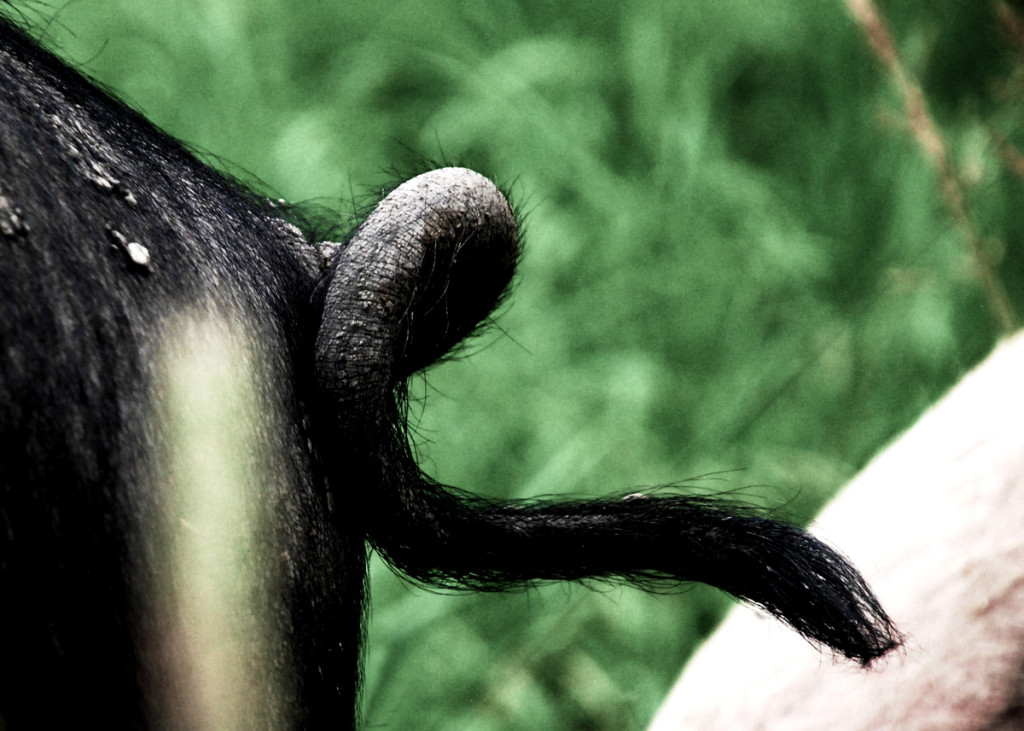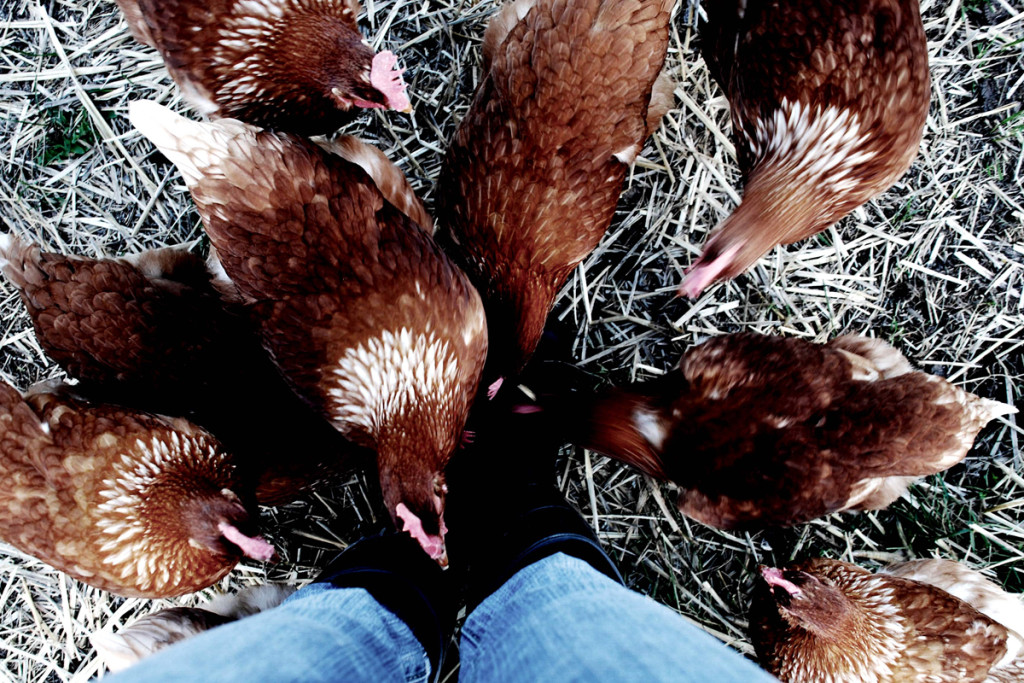In nearly every case, something died for you to go on living. Even a vegan or raw food diet requires suppressing some forms of life. With no exception, the lives of microbes, insects, plants, and indeed, a great many animals, are at stake each time we take a bite. Whether we like it or not, eating is therefore an agricultural, ecological, and political act.
Every animal pictured here was in the process of producing or becoming food. As Jonathan Safran Foer so darkly states in Eating Animals: “We know that if someone offers to show us a film on how our meat is produced, it will be a horror film. We perhaps know more than we care to admit, keeping it down in the dark places of our memory – disavowed.” But the images in this collection are a testament not just to death; they attest to first-hand life-taking experience.
As part of this project, I visited a young couple raising their very first batch of chickens to sell directly to local clients. Their white birds, pictured with crimson life energy draining from their necks, were pasture-raised in north-central Saskatchewan. These new farmers had chosen Cornish Giants (the same breed typically grown by factory farms), opting for a fast-growing bird to capitalise on their relatively abbreviated summers. Their chickens greedily devoured errant grasshoppers and preened in the sunshine. Nonetheless, many had trouble walking due to deformed toes, feet, and legs – apparently optional appendages for the millions of industrially produced chickens which fatten in cages.
Before my husband and I arrived to help butcher them, the chickens were herded into a horse trailer, which was parked alongside the barn where they’d spent their first and warmest days as hatchlings. Then the hand-to-hand assembly line: carcasses are dipped in boiling water to loosen feathers, and then eviscerated – a surprisingly simple matter of reaching up the posterior, grasping the organs, and tugging them back out.
There is a lot of manure, mud, blood, and death facing anyone wanting to observe or experience where home-grown meat comes from.
These images also demonstrate that life and death are experienced differently in different places. Not all regions, provinces, and nations are as blindly accepting of chemistry-driven mass-produced agriculture as my home country, the USA. Rather than confined-feeding-operations driven by the profit motive, the turkeys I observed in central Quebec were indoors as the result of complex legislative logic that upended the province’s outdoor turkey industry. In 2005, in reaction to fears of avian flu, all producers were required to move indoors before the next growing season. Predictably, the market consolidated – not all farmers were able to immediately finance construction of climate-controlled barns. The farmers I visited remarked that turkeys running free on sawdust – rather than grass outside – are much quieter indoors than they were out. It was a behavioural shift which the family-run enterprise, founded in 1946, was in good position to observe.
At the same time, losses to inclement weather, wild dogs, “two-legged foxes”, and owls – which, incidentally, take a Grim Reaper approach, and eat only the heads – are much lower. And now, these farmers can produce turkeys year-round, rather than just during the brief northern summers. Nonetheless, quotas remain in place to constrain the total number of animals any one farmer can raise. Most of these factors not only increase the profitability of the family farm but also, possibly, the overall comfort of the animals.
Canadians eat only 13% as much turkey as they do chicken. Perhaps it has something to do with reproductive biology: at some point in their domesticated past, turkeys forgot how to reproduce. Today, most commercially available turkeys – even the ones I photographed free-ranging in Saskatchewan – only exist due to a complex system of artificial insemination, hatcheries, and overnight delivery to ‘grow-out’ operations. At the end of that painstakingly managed process, the Quebec turkeys were destined for a processing plant. Their free-ranging Saskatchewan counterparts would be butchered and sold through a farm-gate programme which authorises direct sales from farmer to consumer, provided the farmer stays within fairly severe production quotas.
There is a lot of manure, mud, blood, and death facing anyone wanting to observe or experience where home-grown meat comes from. “You have just dined, and however scrupulously the slaughterhouse is concealed in the graceful distance of miles, there is complicity,” wrote Ralph Waldo Emerson. We need not all take life with our own hands as the farmer does after sharpening the killing knife. But, if we eat meat, we cannot escape the fact that we have taken life into our hands.

Young free-range turkeys – Saskatchewan, Canada

Young factory-farm turkeys – Quebec, Canada

Young free-range pigs – Saskatchewan, Canada

Young free-range pig – Saskatchewan, Canada

Working cows in the spring – Saskatchewan, Canada

Working cows in the spring – Saskatchewan, Canada

Feeding free-range laying hens – Saskatchewan, Canada

Butchering free-range farm-raised chickens – Saskatchewan, Canada
Images and concepts copyright 2013-present, Bethann Garramon Merkle, all rights reserved. Please contact Bethann G. Merkle with reproduction requests, questions, etc.
Part of The Learned Pig’s Clean Unclean editorial season, March-May 2015.

